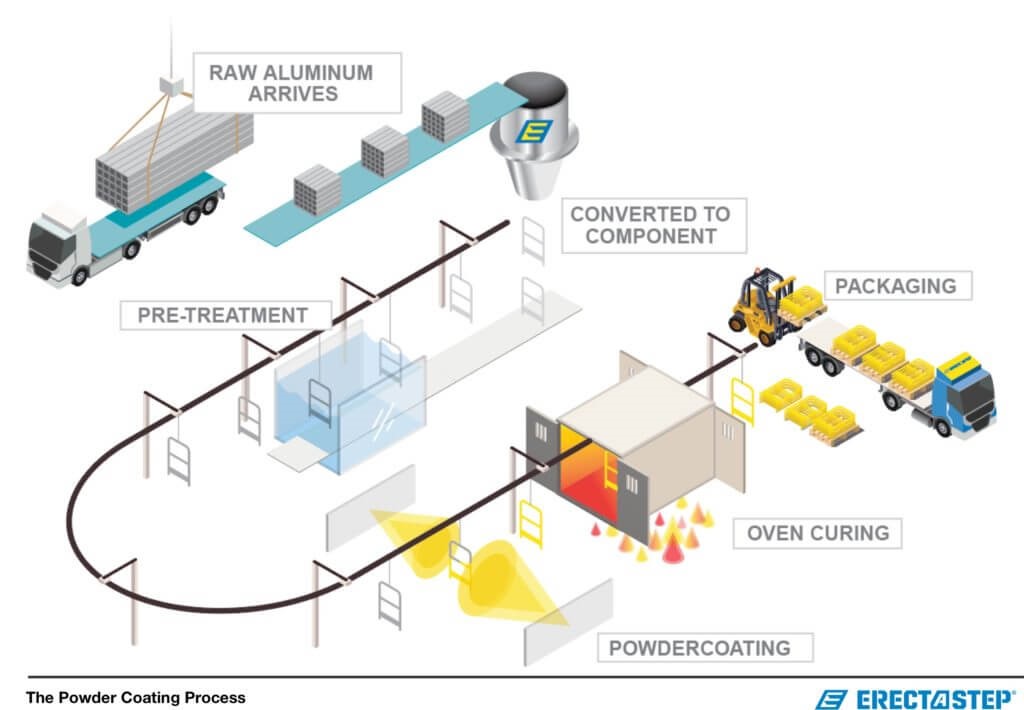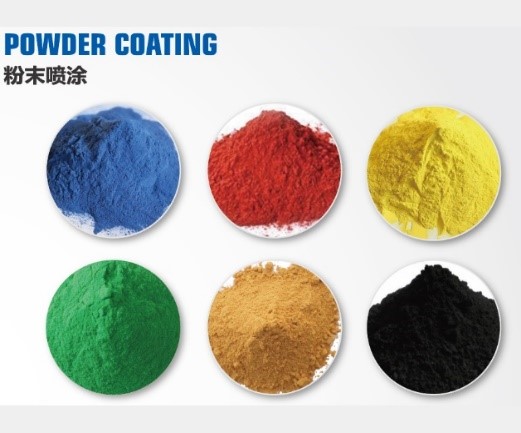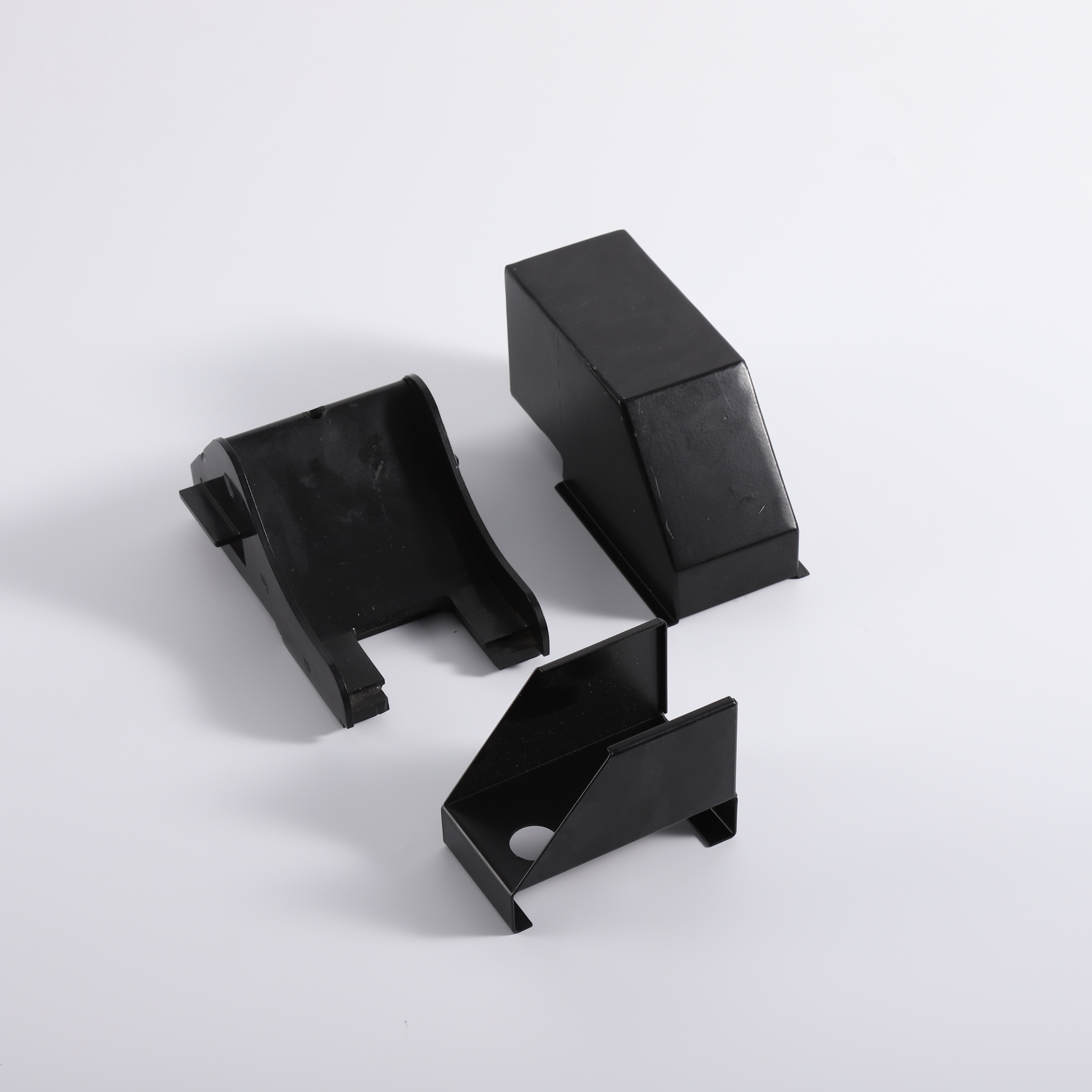Powder coating is a dry finishing process that has become extremely popular. Powder coating is used on a wide array of products. More and more companies specify powder coatings for a high-quality, durable finish, allowing for maximized production, improved efficiencies, and simplified environmental compliance. Used as functional (protective) and decorative finishes, powder coatings are available in an almost limitless range of colors and textures, and technological advancements have resulted in excellent performance properties.
Advantages over other coating processes
1. Environment friendly. Powder coatings contain no solvents and release little or no amount of volatile organic compounds (VOC) into the atmosphere.
2. More thicker coatings without running or sagging than conventional liquid coatings.
3. Perfect color consistency. Powder coated items generally have fewer appearance differences than liquid coated items between horizontally coated surfaces and vertically coated surfaces.
4. A wide range of speciality effects are easily accomplished using powder coatings that would be impossible to achieve with other coating processes.
5. Curing time is significantly faster with powder coatings compared to liquid coatings especially when using ultraviolet cured powder coatings or advanced low bake thermosetting powders.
Powder Coating Process
The Powder coating process involves three basic steps: raw material preparation or the pre-treatment, the powder coating application and curing.
Powder Coating Substrate Considerations
Before applying the powder coating material, you must first consider the substrate material that you will be coating. It is very important to have a clear understanding of the true composition of the surface of the part.
ALUMINUM:
ALUMINUM CASTING
COLD/HOT ROLLED STEEL
CAST IRON
BRASS
COPPER
ZINC
STAINLESS STEEL
Powder Coating Properties:
Coating Properties
Mechanical Properties
Pencil hardness GB/T 6739-1996 H-2H
Adhesion (cross-cut method) GB/T 9286-1998 Grade 0
Bending test GB/T 6742-1986 ≤ 2mm
Impact test GB/T 1732-1993 ≥50kg.cm
Cupping test GB/T 9753-1988 ≥7mm
Corrosion Resistance
Salt spray test GB/T 1771-1991 >500 hours,
no change, crossion width at crossing ≤ 2mm
Damp heat test GB/T 1740-1979 >1000 hours,
mild loss of gloss
Temperature resistance 100°C/48 hours, excellent gloss retention
Powder Coating Colours
RALAL Range, Pantone Range, and other Natural Colour Systems (NCS)
If you have a Powder Coating Colour requirement that we do not stock we are usually able to source powders from the above ranges within 48 hours.
Powder Coating Gloss Level
Gloss is measured as a percentage.
1. Matt Powders are between 20% and 30% gloss.
2. Semi-gloss Powders are usually around 60-65% gloss.
3. Gloss Powders at least 80% and can be 85%.
Powder Coating finishes
1. Textured Powder Coating:
2. Ripple/Leatherette Powder Coating.
3. Hammerite Finish Powder Coating.
4. High Temperature Powder Coating.
5. Anti-Bacterial Powder Coating.
6. Clear or Tinted Powder Coatings.
Application Field
1. In automotive applications:
a) some primers used on bodywork have converted to powder. This has given improved coating quality and provided ecological advantages.
b) where a functional as well as a decorative finish is desirable powder coatings are being used increasingly eg.
i. - wheels,
ii. - bumper bars,
iii. - mirror frames,
iv. - oil filters,
v. - battery trays,
vi. - coil springs and
vii. - heads.
2. Appliances
a) Specially formulated, hard and scratch resistant powder coatings are replacing the energy-intensive porcelain finishes on washer tops and lids.
b) Powder coatings are being used on range housings, freezer cabinets, drier drums, and microwave oven cavities.
c) Outdoor furniture, farm and garden implements and garden tractors also are being finished with powder coating materials. - Interior fluorescent light reflectors are coated using a highly reflective, very thin powder coating.
d) Exterior lamp housings on highway and parking deck fixtures are coated with specially formulated powder which give ultra violet light protection and added corrosion protection
Powder Coating,Custom Powder Coating,Metal Powder Coating,Powder Coating Services Suzhou FCE precision electronics Co., LTD , https://www.sjfukeyifcesz.com
Capital Airport aviation kerosene demand is large and steadily increasing. Yanshan Petrochemical has product pipelines directly to the Capital Airport. On the basis of ensuring the production of gasoline and diesel, the company is striving to optimize the allocation of resources to increase production of aviation kerosene, and the output will increase year by year. This year, on the one hand, on the one hand, by optimizing the processing load of the distillation unit, they ensured the supply of raw materials for aviation hydrotreating units from the resources; on the other hand, they optimized the operation of the unit and strived to increase the production load of jet coal hydrotreating units and high-pressure hydroprocessing units. Maintain high aviation kerosene yield.
According to the staff of the Yanshan Petrochemical Business Planning Department, aviation kerosene production, storage, transportation and sales are strictly system engineering. Therefore, the company strictly controls every aspect of the aviation kerosene production chain. In order to ensure the quality of aviation kerosene, the oil refining system overcomes the disadvantages such as the increase in the proportion of high-sulfur crude oil processed and the frequent changes in crude oil varieties. Starting from the source of production, it carefully adjusts the operation of each operation to ensure the stability of aviation kerosene quality.
It is understood that the company plans to replace the jet coal hydrogenation plant with a more efficient catalyst next year and strive to obtain a monthly aviation kerosene output of more than 100,000 tons.



Yanshan Petrochemical Aviation kerosene production exceeded 1 million tons
As of the end of November, Yanshan Petrochemical's aviation kerosene production reached 101.57 million tons this year, and after concluding the history of aviation capital kerosene transferred from the capital airport to the capital airport, it further consolidated Sinopec’s dominant position in the capital market.